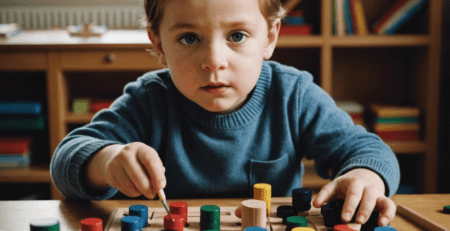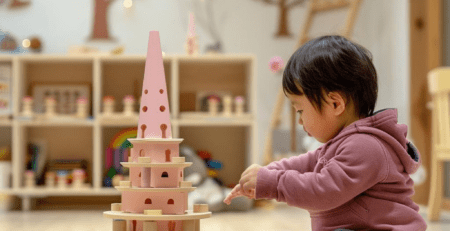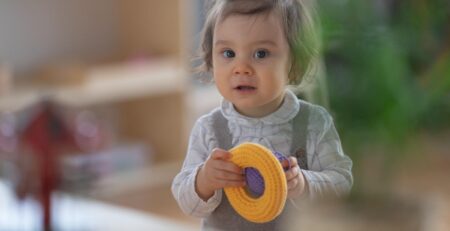
18
Ultimate Guide to the Montessori School Model: Unpacking the Benefits for Children
Welcome to the world of Montessori education, where traditional teaching methods are replaced with a unique approach that nurtures children’s natural curiosity and love for learning. If you’ve ever wondered what exactly a Montessori school is, you’re not alone. In this article, we’ll explore the principles, methods, and philosophy behind Montessori education, and why it is becoming an increasingly popular choice for parents seeking an alternative to traditional schooling. So, let’s embark on a journey to understand what makes a Montessori school different and why it may be the right choice for your child.
Table of Contents
- What is a Montessori school
- History of Montessori education
- Principles of Montessori education
- Differences between Montessori and traditional education
- Montessori materials and learning environment
- Benefits of a Montessori education
- Q&A
- Concluding Remarks
What is a Montessori school?
- Child-centered learning environment
- Emphasis on independence and self-directed learning
- Multi-age classrooms
- Hands-on, sensory-based learning materials
- Respect for each child’s unique learning style and pace
Montessori schools aim to foster a love of learning, critical thinking skills, and a strong sense of community among students. The Montessori method encourages children to explore their interests, make choices, and take ownership of their education, ultimately preparing them for success in the modern world.
History of Montessori education
The dates back to the early 1900s when Dr. Maria Montessori, an Italian physician, developed an educational approach based on her observations of children’s learning behaviors. Dr. Montessori believed in creating an environment where children could learn at their own pace through hands-on activities and self-directed exploration. This approach revolutionized the traditional education system and laid the foundation for what we now know as Montessori schools.
Maria Montessori’s educational philosophy was rooted in the belief that every child has a natural inclination to learn and that it is the role of the teacher to guide and support this innate curiosity. Her methods focused on promoting independence, freedom within limits, and respect for the child’s individual development. Today, Montessori education is widely recognized for its child-centered approach and emphasis on nurturing a love for learning.
Key Principles of Montessori Education
- Child-Centered: Montessori education places the child at the center of their learning experience, allowing them to explore their interests and develop at their own pace.
- Hands-On Learning: Dr. Montessori believed in the importance of hands-on, interactive learning experiences to promote a deeper understanding of concepts.
- Freedom and Responsibility: Montessori schools provide children with the freedom to choose their activities while also teaching them to be responsible for their actions.
- Individualized Learning: The Montessori approach recognizes and supports each child’s unique learning style, abilities, and interests.

Principles of Montessori education
A Montessori school is an educational institution that follows the educational philosophy and principles formulated by Dr. Maria Montessori. This approach is based on the belief that children are naturally curious and capable of directing their own learning. The Montessori method encourages independence, freedom within limits, and a hands-on, self-paced approach to learning.
Montessori education is grounded in several key principles that guide the learning environment and instructional approach. These principles include:
- Child-Led Learning: Montessori schools prioritize the interests and pace of each individual child, allowing them to choose their own activities and explore subjects that capture their attention.
- Multi-Age Classrooms: Children of different ages are often grouped together in Montessori classrooms, encouraging collaboration, mentoring, and a sense of community.
- Hands-On Learning: The use of specialized Montessori materials and activities fosters experiential learning and the development of practical life skills.
- Individualized Instruction: Teachers observe and understand each child’s unique learning style, tailoring their approach to support the child’s intellectual, emotional, and social development.
Comparison of Montessori Education and Traditional Education
Montessori education differs from traditional education in several ways. The following table provides a brief comparison of these two educational approaches:
| Aspect | Montessori Education | Traditional Education |
|---|---|---|
| Teacher Role | Guide, Observer | Authority Figure, Instructor |
| Classroom Environment | Child-Centered, Orderly, and Peaceful | Teacher-Led, Structured |
| Learning Approach | Child-Led, Hands-On, Self-Paced | Curriculum-Centered, Group Instruction, Timed Activities |

Differences between Montessori and traditional education
When it comes to choosing the right educational path for your child, it’s important to understand the . Both systems have their own unique approach to learning, and it’s crucial to consider which one aligns best with your child’s needs and learning style.
Montessori Education:
- Child-centered approach
- Emphasis on hands-on learning
- Individualized learning pace
- Mixed age classrooms
- Teacher acts as a guide
Traditional Education:
- Teacher-centered approach
- Structured curriculum
- Group-based learning
- Same age classrooms
- Teacher as the primary source of knowledge
Understanding these fundamental differences can help you make an informed decision about the best educational environment for your child. Whether you opt for the child-centered approach of Montessori or the more structured traditional education system, it’s important to consider your child’s unique strengths and learning style.

Montessori materials and learning environment
What sets a Montessori school apart from traditional schools is its unique approach to learning. At the heart of the Montessori method are the materials and the learning environment. Montessori materials are specially designed to encourage hands-on learning, independent exploration, and self-paced progress. These materials are carefully curated to promote the development of cognitive, physical, and social skills in children. The learning environment in a Montessori school is meticulously planned to foster a sense of independence, freedom, and respect for each child. Classrooms are often mixed-age, allowing children to learn from one another and develop a strong sense of community.
Montessori materials are thoughtfully designed to promote learning in various subject areas, including mathematics, language, sensorial exploration, practical life skills, and cultural studies. Each material is carefully selected to support specific learning objectives and to encourage children to engage in purposeful activities. The learning environment is designed to be inviting and conducive to learning, with natural lighting, open spaces, and a variety of engaging learning materials. The overall aim is to create an environment that nurtures a child’s natural curiosity, creativity, and love for learning.

Benefits of a Montessori education
Montessori education is a unique approach to learning that focuses on the holistic development of a child. This educational method, developed by Dr. Maria Montessori, emphasizes self-directed activity, hands-on learning, and collaborative play. There are numerous that set it apart from traditional schooling.
1. Individualized Learning: In a Montessori classroom, students are encouraged to learn at their own pace and pursue their interests. This individualized approach allows children to develop a strong sense of self and a love for learning.
2. Hands-On Learning: Montessori education emphasizes hands-on learning experiences, which help children develop critical thinking skills and a deeper understanding of concepts. Through manipulative materials and real-life experiences, students are able to engage with their learning in a meaningful way.
3. Collaboration and Social Skills: Montessori classrooms promote a sense of community and collaboration among students. Through mixed-age classrooms, children learn to work together, communicate effectively, and develop empathy towards others.
Q&A
Q: What is a Montessori school?
A: A Montessori school is an educational approach developed by Dr. Maria Montessori that focuses on a child-centered learning environment.
Q: How is a Montessori school different from a traditional school?
A: In a Montessori school, children have more freedom to choose their activities and work at their own pace, with a focus on hands-on learning and exploration.
Q: What age range does a Montessori school typically serve?
A: Montessori schools typically serve children from as young as 18 months to 12 years old, covering preschool through elementary education.
Q: What are some key characteristics of a Montessori classroom?
A: Montessori classrooms are often mixed-aged, allowing children to learn from and with each other, and are typically equipped with a range of learning materials and resources.
Q: How is discipline handled in a Montessori school?
A: Montessori schools often promote self-discipline and independence, with a focus on guiding children to make positive choices and learn from their experiences.
Q: What are the benefits of a Montessori education?
A: Some benefits of a Montessori education include fostering independence, critical thinking, and a love for lifelong learning, as well as promoting social and emotional development.
Q: How can parents find a reputable Montessori school for their child?
A: Parents can research and visit Montessori schools in their area, ask for recommendations, and inquire about the school’s accreditation and qualifications of the teachers.
Concluding Remarks
In conclusion, Montessori schools offer a unique and child-centered approach to education, focusing on independence, hands-on learning, and individualized instruction. By creating a supportive and nurturing environment, Montessori schools aim to foster a love for learning and help children develop the skills they need to become confident, capable individuals. Whether you are a parent considering a Montessori education for your child or simply curious about the Montessori method, we hope this article has provided you with a better understanding of what makes Montessori schools so special. Thank you for joining us on this exploration of what a Montessori school is all about.










